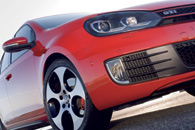
Among the current crop of hot hatches, the limelight stealer would definitely be the Ford Focus RS. The most extreme version of the Ford Focus has re-written the rules book by laying down 300 horsepower down on the front wheels alone. It was only a decade ago that Saab felt that 150 horsepower was very much the limits of a front-wheel drive car.
When Volkswagen launched the Golf GTI (Mark V) back in 2004, it was considered a breakthrough vehicle in many aspects. Other than pushing the limits of the power acceptable for front-wheel drive cars back then, it has revived an iconic badge that has gone south for a while.
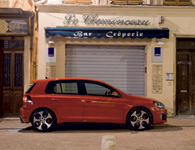
Volkswagen started with a car of pure genius back in 1975 and following it up with something even more impressive, but the MkIII Golf GTI (1991) was a dud and MkIV (1998) looked like one more nail in the coffin.
Hence the MKV Golf GTI is a comeback as miraculous as Whitney Houston from her Amy Winehouse days. And which goes a long way to explain why our featured car of the week, the MK VI Golf GTI (which is essentially a very thoroughly worked over MK V) feels rather déjà vu. Volkswagen is playing a Porsche 911-esque evolution game here.
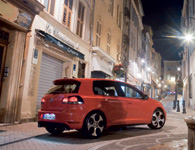
At first glance, little appears to be changed between the MK V and the MK VI, but bring it together and the differences are stark. The new front end of the new car now carries horizontal design themes, paying homage to the original 1975 GTI and the new Scirocco coupe. The only carried over part from the MK V was the roof. Hence, the dynamic looks of Klaus Bischoff's efforts on the new car has erased the previous model’s Gallic inspired lines
While performance feels similar to the old car, there is a smoother and more refined attitude with the way the engine goes about doing it’s business. Perhaps the center of drama comes from the new exhaust system which feels more dominant than before given the improved sound insulation of the MK VI Golf. While not audible would be the estimated 10 percent improvement in fuel efficiency, as Volkswagen claims an average consumption of 7.4 litres per 100km which is excellent considering the performance on offer here.
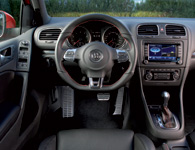
It is inevitable that the new GTI feels a tad grown-up even with standard toys like the XDS electronic differential and the three-stage DCC. The XDS is not a proper locking diff offered on the Focus RS, instead the diff remains open. Torque-limiting of the spinning inside wheel is controlled by the XDS, in conjunction with the ESP system, applying to the brakes to that wheel. In English, it helps to increase the feel of stability in faster corners.
And the other standard feature on our local cars would be the three-stage DCC, dynamic chassis control. This allows the driver to select the desired damper characteristics according to the roads or your mood – comfort, normal and sport. For better body control and steering weight, opting for sport mode is best. However, on bad road surfaces, which Singapore is increasingly filled with, the ride on sport can be too firm as you would feel the urge to stop by to check if you have ruined the beautiful but fragile 18-inch ‘Detroit’ alloy wheels.
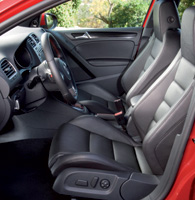
Inside, there are touches like the sawn-off wheel with red stitching, the aluminium-effect pedals and chunky sports seats will leave you in no doubt that this is no normal Golf. While the quality of plastics in the cabin feels a marked improvement over it’s predecessor, it feels like a missed opportunity for the German manufacturer to make a even bigger step to further sex things up a bit with the dash design.
Our advice? Buy the five-door GTI if you need the practicality of those additional doors. Avoid the slightly disproportionate three-door, simply because the slightly cheaper Scirocco looks much better and drives a wee bit better.
Bottom line is that the Golf GTI is still fun but a more grown-up package. Next to the likes of the Focus RS and the Renault Megane R26R, the sixth-gen Golf GTI may appear tame. But as an all-rounder, the formula spun up by the Golf GTI is hard to top.
| Engine | 1984cc four cylinder, dohc, turbocharged |
| Transmission | 6-speed DSG (automated manual) |
| Wheels Driven | Front |
| Max. Power | 210bhp @ 5300-6200rpm |
| Max. Torque | 280Nm @ 1700-5200rpm |
| 0-100 km/h | 6.9 secs |
| Top speed | 238 km/h |
| Fuel Economy | 7.4 litres per 100km |
| CO2 Emissions | Euro 5 |
| Dimensions (L x W x H) | 4210mm X 1779mm X 1465mm |
| Price with COE* | S$131,800 |












 Printable Version
Printable Version











Reader's Comments
Be the first to leave a comment on this page!
Please log in to use this feature.